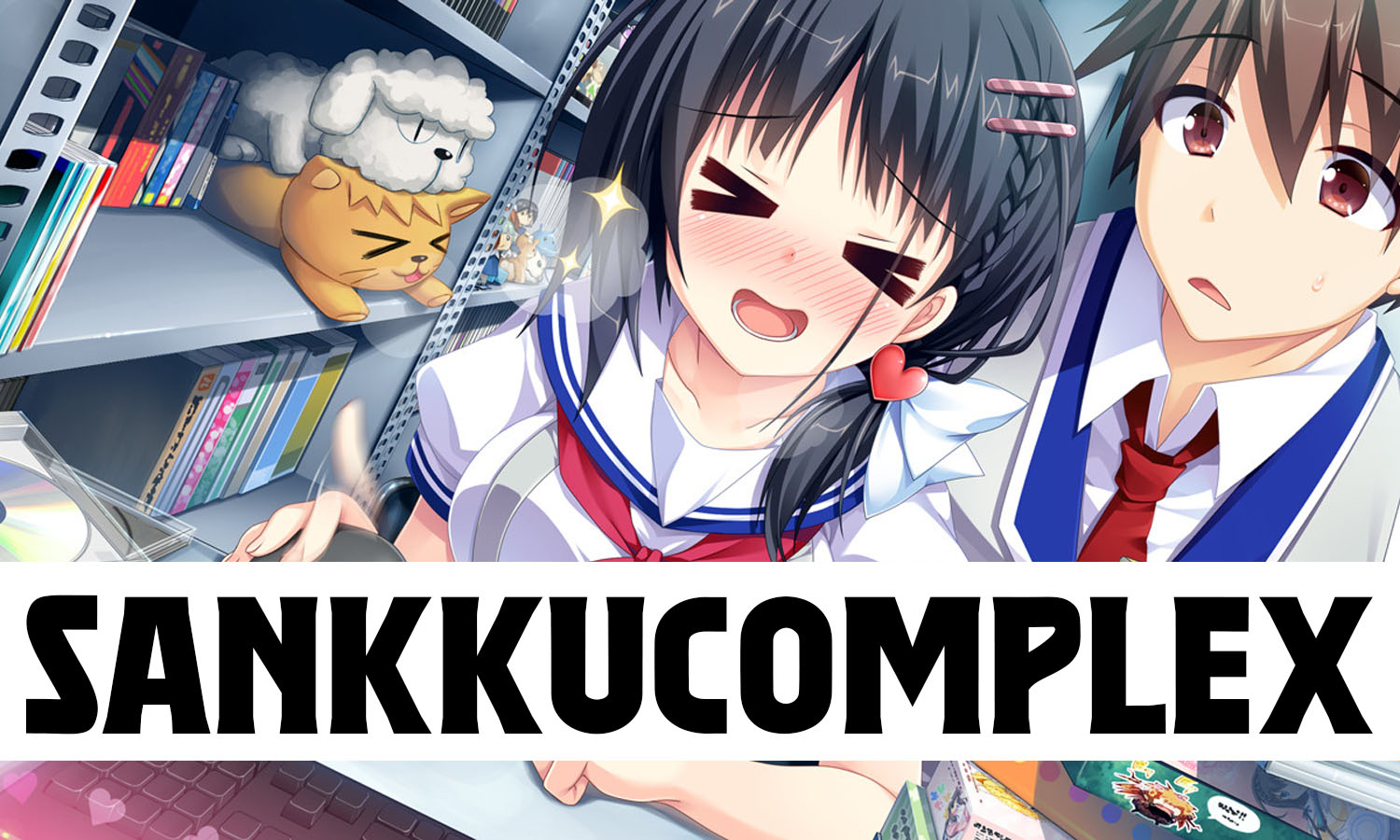Celebrity
Decoding “Sankkucomplex”: The Japanese Films and Games You’re Looking For

You’ve likely stumbled upon the term “Sankkucomplex” while searching for a new Japanese film, visual novel, or perhaps even a manga. It’s a phrase that isn’t a formal title itself, but rather a unique amalgamation of similar-sounding titles that share a common theme: the ever-complicated “love triangle.” This article will serve as your definitive guide to understanding what people are really talking about when they mention “Sankkucomplex.” We’ll dive deep into two distinct and popular works: the introspective 2010 film Sankaku (さんかく) and the comedic visual novel Sankaku Renai: Love Triangle Troubles (好きと好きとで三角恋愛).
By exploring both, you’ll not only understand the distinction between them but also get a clear picture of how Japanese media utilizes the “love triangle” trope in dramatically different ways—one as a vehicle for tense psychological drama, and the other for lighthearted, fourth-wall-breaking comedy. So, let’s get started on untangling this complex web.
The Film: Sankaku (2010) – A Psychological Look at a Strained Relationship
Directed by Keisuke Yoshida, Sankaku is a film that is far from a typical romantic comedy. The title, which translates to “triangle,” perfectly sets the stage for a story of a dysfunctional love triangle that is more about psychological tension and unfulfilled desires than it is about grand, passionate romance.
The Premise
The story centers on Momose, a 30-year-old man, and his girlfriend, Kayo, who is 29. They’ve been living together for two years, and the initial spark of their relationship has long since faded. Their daily life is a monotonous routine, and Momose, in particular, has grown bored and withdrawn. He’s unfriendly and emotionally distant, a stark contrast to his past as a street punk.
Their stale, suffocating routine is abruptly interrupted when Kayo’s 15-year-old sister, Momo, comes to stay with them for the summer. Momo is everything the couple is not: lively, free-spirited, and innocent in a way that feels both charming and unsettling. Her presence in their small apartment acts as a catalyst, shaking the foundations of Momose and Kayo’s already fragile relationship.
Unpacking the Psychological Drama
The genius of Keisuke Yoshida’s direction lies in his ability to use this simple setup to explore deeply cynical and sophisticated themes. Momose finds himself strangely drawn to the carefree Momo. The film doesn’t romanticize this attraction; instead, it portrays it as a sign of Momose’s dissatisfaction and immaturity. He’s not falling in love; he’s regressing. Momo’s innocent flirtations and uninhibited behavior stir a feeling of unease in Momose, a mix of curiosity and discomfort that he can’t quite place.
Kayo, on the other hand, senses the shift in the dynamic immediately. Her jealousy isn’t just about a potential affair; it’s about the very core of her relationship being exposed as hollow. The presence of her younger, more vibrant sister highlights everything that is missing from her life with Momose. The film masterfully uses subtle gestures, awkward silences, and loaded glances to build an almost unbearable tension.
Key Themes and Character Analysis

- Unsatisfied Needs and the Search for Validation: Both Momose and Kayo are deeply unhappy, but in different ways. Momose is looking for an escape from his mundane life and finds a fleeting sense of validation in Momo’s attention. Kayo is desperate to reconnect with the man she once knew, but her attempts are met with indifference. Their needs are unmet, and they struggle to communicate this to each other, instead lashing out in passive-aggressive ways.
- The Inevitability of a Breakdown: The love triangle isn’t a story of who the protagonist will choose. From the beginning, it feels less like a choice and more like an impending disaster. The characters are trapped in a situation they can’t control, and the film expertly guides us through the slow, painful unraveling of their relationship. The climax of the film, where Momose finally confesses his feelings, isn’t a triumphant moment; it’s a foolish, desperate act that leads to even more humiliation.
- A Cynical View of Romance: Director Keisuke Yoshida presents a stark, almost brutal view of what happens when the passion dies. Sankaku suggests that once the initial spark is gone, what remains is a fragile, easily broken thing. The film’s ending is ambiguous and open to interpretation, leaving the audience to ponder the meaning of Momose’s final actions and the future of the characters. It’s not a happy ending, but it’s a poignant and realistic one.
The Visual Novel: Sankaku Renai: Love Triangle Troubles
In stark contrast to the gritty realism of the film, Sankaku Renai: Love Triangle Troubles is a vibrant, self-aware, and unabashedly comedic visual novel. Developed by ASa Project, this game takes the “love triangle” trope and playfully turns it on its head, using it as a foundation for a lighthearted and often absurd story.
The Premise
The protagonist is Sousuke, a young man who has lived with his stepmother and stepsister, Nanaru, since his parents’ divorce. Sousuke and Nanaru have a close bond, sharing a love for all things “otaku”—from anime to manga. Their quiet, tranquil life is thrown into chaos with the arrival of his biological younger sister, Suzu. Suzu, who hasn’t seen Sousuke in years, is determined to reclaim her place as the “real” sister, creating a comedic rivalry with the free-spirited Nanaru.
But the “love triangle” doesn’t stop there. The game introduces two other prominent female characters: the childhood friend Maho, a fighting game enthusiast with a competitive streak, and Shiina, an upperclassman who is obsessed with eroge (adult games) and declares her love for Sousuke at first sight. These characters form a second, more traditional love triangle, forcing the protagonist to navigate a hilarious web of romantic chaos.
Embracing Tropes and Comedy

Unlike the film, Sankaku Renai leans heavily into common anime and visual novel tropes, but it does so with a wink and a nod. The characters are archetypes, but they are brought to life through witty dialogue and over-the-top personalities. The game’s primary focus is not on a deep, emotional story, but on making the player laugh.
- Fourth-Wall Breaking Humor: The visual novel is famous for its self-aware and meta-humor. Shiina, the eroge-loving senpai, often sees the world through the lens of a video game, making comments and choices that directly reference the genre. This constant breaking of the fourth wall adds a unique layer of humor and makes the player feel like they are in on the joke.
- Minimalist Drama: While there are moments of mild conflict and character growth, the visual novel never takes itself too seriously. Any potential drama is quickly resolved or undercut by a joke. The routes themselves are designed to be fun and engaging, with different choices leading to various character-specific storylines. The focus is on the journey of getting to know the characters and enjoying their antics, not on the emotional fallout of a complex romantic decision.
- The Power of Choices: As a visual novel, the gameplay of Sankaku Renai revolves around player choice. The story branches out, allowing you to pursue a relationship with one of the main heroines. There are multiple endings, and the game encourages you to explore different paths to see all the comedic possibilities. This interactive element is a core part of the experience, giving you control over the “love triangle” and its resolution.
Frequently Asked Questions (FAQs)
1. Is “Sankkucomplex” a real term? No, “Sankkucomplex” is not a formally recognized term. It’s a combination of the titles Sankaku and Sankaku Renai, which are two different Japanese works.
2. What does “Sankaku” mean? “Sankaku” (さんかく) is the Japanese word for “triangle.” Both the film and the visual novel use this term to refer to the central “love triangle” theme.
3. Are the film and the visual novel related? No, they are completely separate works with different creators, plots, and tones. They are connected only by the similar-sounding title and the shared theme of a love triangle.
4. Where can I watch the film, Sankaku? As a 2010 Japanese film, it may be available on various streaming platforms that specialize in international cinema. You might also find it on video-on-demand services or through physical media releases.
5. How do I play the visual novel, Sankaku Renai? Sankaku Renai: Love Triangle Troubles is available on PC, often through digital storefronts like Steam. You can check these platforms for availability and system requirements.
6. Is the visual novel suitable for all audiences? The visual novel contains mature themes and is often rated for adults due to its content, which includes sexual jokes and innuendo. It is not suitable for children.
7. Who is the director of the film Sankaku? The film was directed by Keisuke Yoshida, a Japanese filmmaker known for his character-driven dramas and a cynical, realistic approach to human relationships.
8. What makes the visual novel so funny? The visual novel’s humor comes from its clever, fourth-wall-breaking dialogue, its self-aware embrace of anime tropes, and the over-the-top personalities of its characters.
9. Are the plots of the film and visual novel similar in any way? Beyond the central theme of a love triangle, the plots are very different. The film is a grounded psychological drama about a failing relationship, while the visual novel is a comedic slice-of-life story.
10. Why is the “love triangle” a popular trope in Japanese media? The love triangle is a powerful tool for creating conflict and tension. In Japanese media, it’s often used to explore themes of choice, destiny, and the complex nature of human relationships, ranging from deep emotional drama to lighthearted romantic comedy.
Click for more amazing info. News MM

-

 Celebrity4 months ago
Celebrity4 months agoIndia Rose Brittenham: All You Need to Know About Heather Thomas’ Daughter
-

 Celebrity4 months ago
Celebrity4 months agoNadia Farmiga? All You Need to Know About Taissa Farmiga’s Sister
-

 Celebrity4 months ago
Celebrity4 months agoMargot Rooker: All You Need to Know About Michael Rooker’s Wife
-

 Celebrity4 months ago
Celebrity4 months agoRobert Noah? All You Need to Know About Trevor Noah’s Father
-

 Celebrity3 months ago
Celebrity3 months agoWho Is Itchko Ezratti’s Wife? Anna Ezratti Supporting Her Husband’s Legacy
-

 Celebrity4 months ago
Celebrity4 months agoVerna Aho? All You Need to Know About Lauri Markkanen’s Wife
-

 Celebrity4 months ago
Celebrity4 months agoJackie Witte? All You Need to Know About Paul Newman’s First Wife
-

 Celebrity4 months ago
Celebrity4 months agoCheryl Pistono? All You Need to Know About Kareem Abdul-Jabbar’s Ex-Girlfriend












